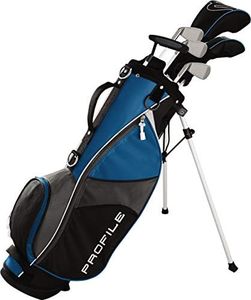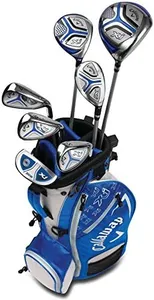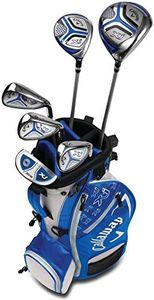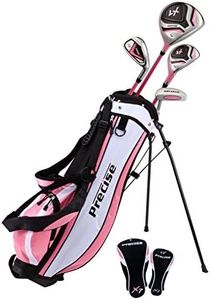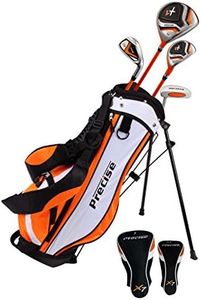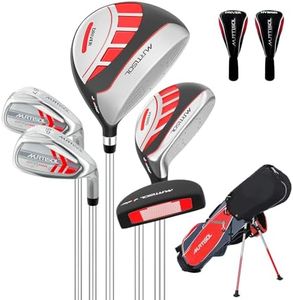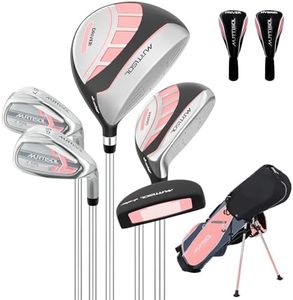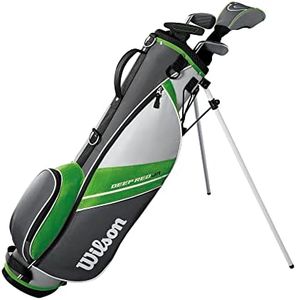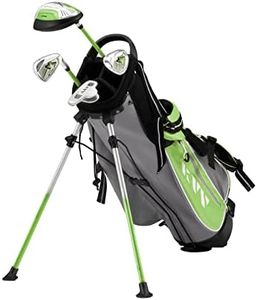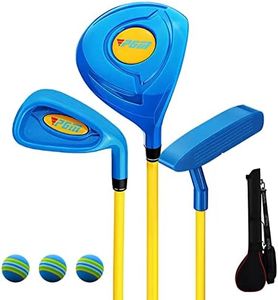We Use CookiesWe use cookies to enhance the security, performance,
functionality and for analytical and promotional activities. By continuing to browse this site you
are agreeing to our privacy policy
10 Best Kids Golf Clubs
From leading brands and best sellers available on the web.By clicking on a link to a third party's website, log data is shared with that third party.
Buying Guide for the Best Kids Golf Clubs
Choosing the right golf clubs for kids is all about making the game enjoyable and comfortable, giving them the best chance to learn and improve. Young golfers are growing and developing, so clubs need to match their size, strength, and skill level. Paying attention to key specifications will help you select a set that boosts confidence without being too challenging for them to handle.Club LengthThe length of a golf club is basically how tall the club is from end to end. For kids, club length is crucial because a club that's too long or too short can disrupt their natural swing and make learning difficult. To decide on the right club length, you generally look at the child's height. Clubs often come with guidance for height ranges, from clubs for very young children (short and light) to clubs suited for taller, older kids. Make sure the club fits the child's hand comfortably when standing naturally – they shouldn't have to stretch or hunch over. By matching the club length to your child's current height, you’ll help them swing naturally and comfortably.
Club WeightClub weight tells you how heavy the golf club feels when the child is swinging it. This is important because kids need to be able to control the club easily without feeling tired or overworked. Younger children or beginners need lighter clubs, which are easier to handle, while older or more experienced kids might benefit from slightly heavier clubs for better control and distance. If your child is struggling to lift or swing the club smoothly, it’s too heavy. Always consider clubs labeled as 'junior' or 'youth,' as these are designed to be lighter for smaller golfers.
Shaft FlexShaft flex refers to how much the golf club's shaft bends during the swing, and it affects both feel and performance. For kids, a 'junior flex' or 'flexible' shaft is typically best, as it helps generate more power with less effort. Stiffer shafts are for older, stronger, or more skilled players who swing faster. Younger or newer golfers should stick with more flexible shafts to help them get the ball up in the air and maximize their distance while learning.
Set CompositionSet composition is about which and how many clubs are included. Kids' golf sets usually have fewer clubs, focusing on the essentials like a driver, an iron or two, a wedge, and a putter. For beginners, a basic set is better so they don't get overwhelmed, while more advanced young players might benefit from a fuller set that includes specialty clubs. Think about your child’s age and experience; simple sets are perfect for most new or younger golfers.
Grip SizeGrip size is the thickness and feel of the part of the club your child holds. This matters because a grip that’s too big or too small can affect comfort and control. Junior clubs come with slimmer, softer grips to fit smaller hands. When trying clubs, make sure your child can easily wrap their fingers around the grip without straining; this helps with proper technique and confidence.
Club MaterialClub material usually refers to what the shaft and head are made of. Most kids’ clubs have shafts made from lightweight graphite, which makes them easier to swing. Club heads are often made from stainless steel, providing durability and forgiveness on mishits. For nearly all young golfers, graphite shafts are best as they are lighter and help kids swing faster and with better form.
